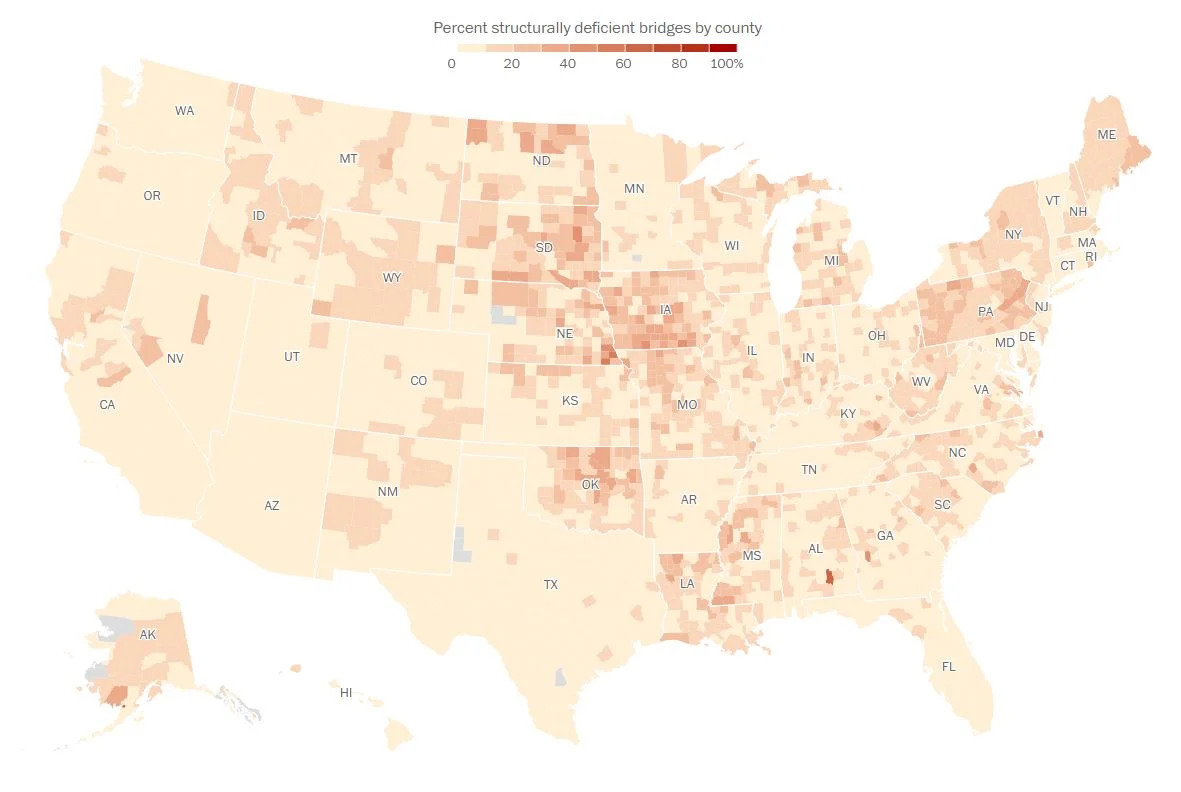via The Washington Post
The phrase “America’s crumbling infrastructure” has been said over and over again the past few years. It’s why we’ve seen such a large uptick in bridge demolitions, a rise in innovative processes to reduce the time it takes to replace bridges, and the reason for President Trump’s emphasis on spending $1 trillion over the next 10 years to fix them.
But where are all the bridges? Thanks to help the National Bridge Inventory, the Washington Post was able to grab data from their latest update and place all of the structurally deficient bridges onto an interactive map. The National Bridge Inventory places poorly performing bridges into 2 categories: functionally obsolete and structurally deficient. Functionally obsolete bridges may or may not be structurally sound, but underperform in other ways, like not having enough lanes or the lack of an emergency shoulder. Structurally deficient bridges are those “that have one or more structural defects that require attention.”
The National Bridge Inventory data states that more than 130,000 bridges are either structurally deficient or functionally obsolete. According to USA Today, 55,710 bridges were considered structurally deficient in 2016, which is actually down slightly as compared to 2015. USA Today reported that the top five states with the most structurally deficient bridges are Iowa (4,968), Pennsylvania (4,506), Oklahoma (3,460), Missouri (3,195), and Nebraska (2,361).
Bridges are graded based upon their overall sufficiency scores, and the Washington Post reported that the bridges with the lowest sufficiency scores will be prioritized for federal financing. Because the bridge data is only current through 2015, there are still a lot of bridges on the list that have already been demolished, like the Washita River Bridge in Oklahoma.
Click here to check out the interactive map!
Full Story: How many structurally deficient bridges are in your county? | The Washington Post
Full Story: Nearly 56,000 bridges called structurally deficient | USA Today











In the midst of fierce discourse over the bipartisan infrastructure bill lies a unique opportunity for the United States.